Cúcuta
Department
Norte de Santander, Colombia
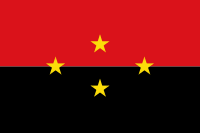
Flag of the city
The Flag of Cúcuta It was made official on May 3 of the year 1988, although it was used for the first time in the year of 1928. This flag is composed of two horizontal stripes of equal size. The upper strip is black and the lower strip is red. Their colours represent the blood shed by the ancestors to achieve the freedom of Cúcuta and the great riches of the region.
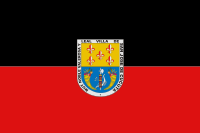
Seal of the city

Slogan of the city
Its breath-taking aesthetics have bestowed upon it monikers like the “Pearl of the North.” Moreover, owing to its abundant foliage, which surpasses its human population in number, Cúcuta has gained recognition as the “Green City.” Remarkably, a single district within the city boasts an impressive array of 71 distinct tree species, among which the cují tree, a symbol of Cúcuta, prominently stands.
History
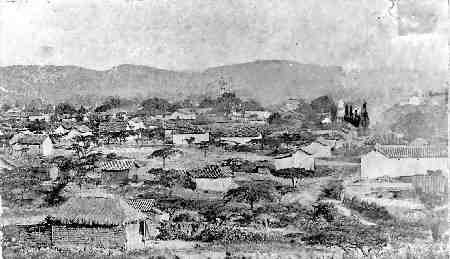
Cúcuta has a rich historical background, tracing its origins to a pre-Hispanic settlement. In 1550, Sebastian Lorenzo received it as an encomienda from Pedro de Ursua. The city was officially founded on June 17, 1733, by Juana Rangel de Cuellar, who generously donated 782 hectares of land for its establishment. Initially centered on a church, Cúcuta’s strategic location as a commercial hub contributed to its growth, eventually leading to its transformation into a city.
Notably, Cúcuta played a pivotal role in Colombia’s path to independence. The Congress of 1821 convened in this city, resulting in the creation of the Constitution of Cúcuta, which laid the foundation for Greater Colombia—a nation encompassing present-day Colombia, Venezuela, Ecuador, and Panama. Several historical sites in Cúcuta bear witness to these events, including the Historical Church of Cúcuta, the House of Santander, and the Park of Greater Colombia.
Furthermore, the Battle of Cúcuta, which occurred on February 28, 1813, marked the start of Simón Bolívar’s Admirable Campaign. Bolívar led a successful charge to liberate the city from Spanish forces, significantly contributing to Colombia and Venezuela’s independence struggle.
Cúcuta’s history also includes early European expeditions into the North Santander region. Ambrosio Alfinger and Diego de Montes were among the first explorers in this territory, facing challenges from indigenous communities. The city of Pamplona was founded in tribute to the Spanish city of the same name, attracting settlers due to its favorable climate and the discovery of gold mines in the region.
In the 17th century, Captain Christopher de Araque Ponce de Leon’s ownership of vast territories in the Cúcuta Valley played a crucial role. Indigenous resistance to Spanish control prompted the establishment of the Catholic parish of “San José,” with Juana Rangel de Cuéllar’s generous land donation in 1733 forming the foundation of the San Luis neighborhood.
Ultimately, Cúcuta’s historical significance extends to the Congress of Cúcuta, which convened on August 30, 1821, in the town of Villa del Rosario (now part of Cúcuta). This congress, attended by prominent figures like Antonio Nariño, Francisco de Paula Santander, and Simón Bolívar, aimed to unite the territories of New Granada and Venezuela, leading to the formation of the Republic of Colombia (Gran Colombia), with Ecuador later joining this union. Simón Bolívar was sworn in as the president of this newly formed republic on October 3, 1821, in a historic moment within the sacristy of the church.
Geography of the city
Cúcuta is situated in the eastern region of North Santander Department, nestled within the Cordillera Oriental mountain range and in close proximity to the Venezuelan border. The city spans an area of 110 square kilometers (42 square miles) and enjoys an elevation of 320 meters (1,050 feet) above sea level. Cúcuta, a bustling city in northeastern Colombia, is positioned at a latitude of approximately 7.893907° N and a longitude of around 72.507690° W. Cúcuta enjoys a warm tropical savanna climate with distinct wet and dry seasons, influenced by its geographical location in the northeastern part of the country. The city’s flat topography is framed by the nearby eastern Andes mountain range, while the Pamplonita River, a tributary of the Catatumbo River, meanders through the surrounding region. Known as the “Green City” due to its lush vegetation, Cúcuta is strategically located for cross-border trade and transportation with Venezuela, facilitated by the Simón Bolívar International Bridge, a key border crossing point. This dynamic city also offers access to nearby natural attractions and national parks, including the Tamá National Natural Park, allowing visitors to explore the diverse landscapes of the area.
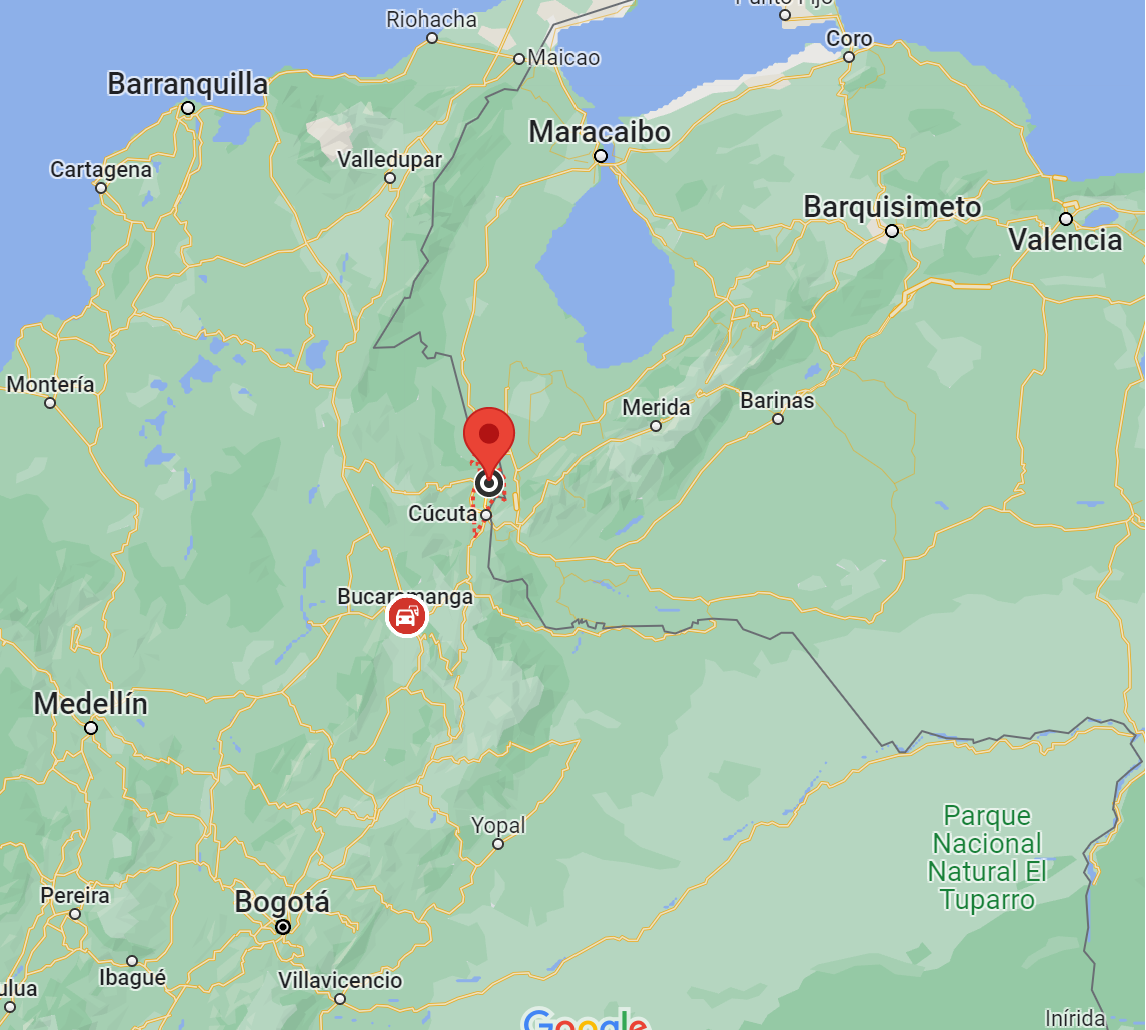
Population
The current metro area population of Cucuta in 2023 is 963,000, a 1.05% increase from 2022. The metro area population of Cucuta in 2022 was 953,000, a 1.06% increase from 2021.
963,000(2023)
953,000(2022)
One photo representative of the city
The Historic church of Cúcuta or Historic Temple of Cucuta (Spanish: Templo Historico de Cucuta) is a historic site where the first constitution of Colombia was written and signed. It is located in the city of Villa del Rosario in the metropolitan area of Cúcuta, and very close to the Venezuelan border. The site was almost entirely destroyed by the earthquake of 1875, and later partially rebuilt. It is part of the National Monuments of Colombia since 1935.
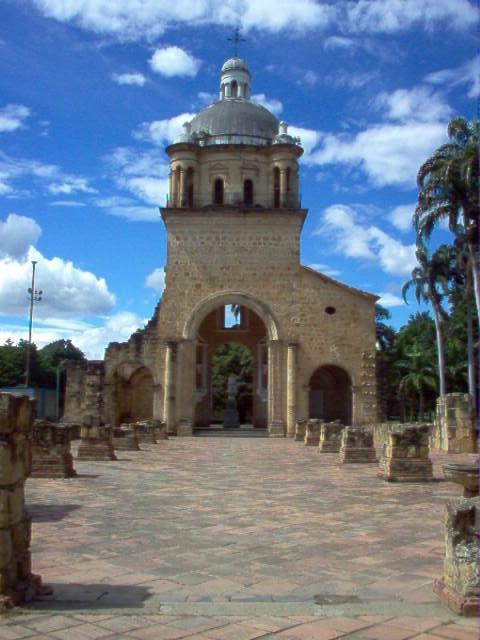
Etymology
The city follows the naming convention typical of many Spanish settlements in the Americas, with its name, San José (a name widespread throughout the continent due to devotion to Saint Joseph), paying homage to Saint Joseph. The name Cúcuta, however, was adopted in honor of the indigenous cacique Kuku-ta, known as “Cúcuta” in Spanish, representing the Motilon-Bari indigenous community that inhabited the region before the arrival of the Spanish. In the native language, Kuku-ta translates to “House of the Goblin.” The city was initially referred to as San José de Guasimales from 1733 to 1793 before adopting its current name.
The city’s coat of arms proudly bears the inscription “Muy Noble, Valerosa y Leal Villa de San José de Cúcuta,” signifying the title granted to it through a royal decree, recognizing the dedication of its inhabitants. King Charles IV of Spain bestowed this title in recognition of the city’s diligent residents, and the legal process for obtaining this village status was facilitated by the efforts of José María Maldona, a lawyer from the Royal Audience. This historical recognition occurred just before the close of the 18th century, under the Viceroy José Manuel de Ezpeleta’s authority.
Cúcuta is affectionately known by various nicknames, including “The Pearl of the North,” “Gate of the Border,” “Green City,” “City of Trees,” and “The Basketball Capital of Colombia.”
What the city is known or famous for
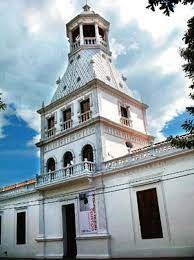
At the outset of the 20th century, a residence for the Colmenares Jácome family was constructed on the former José Custodio García Rovira street, which would later become the site of the Clock Tower. In 1923, the building changed hands and was acquired by Eléctricas del Norte S.A., the company responsible for public lighting in the city, which transformed it into their headquarters. This company oversaw the construction of the iconic tower that still adorns the building, initially adorned with tricolor bulbs in homage to the national flag. The entire design, tower construction, and facade enhancement were masterfully executed by Crisanto Ramírez. The clock’s bells, which bestowed the tower with its name, were crafted in Torino, Italy, by the Miroglio family. These bells bear inscriptions that read: “Premiata fonteria de Poli Victorio Veneto Italia. North Electric Company – Cúcuta. MCMXXX.” This piece was imported by Andrés Fernández, who was the manager of the Company at the time. Between 1948 and 1960, the building served as the offices for the Municipal Companies of Cúcuta and Centrales Eléctricas del Norte de Santander S.A. In 1960, with the establishment of schools for dramatic art and painting, the building took on a cultural role, and its official inauguration occurred on February 24, 1962, with then-President of the Republic Alberto Lleras Camargo presiding. On March 12, 1982, the Torre del Reloj house was declared a National Monument, and on August 25, 2003, it received the designation of an Asset of Cultural Interest of National Character, recognizing it as an exemplary piece of republican architecture in Colombia and a prominent landmark in the city’s urban landscape due to its historical and aesthetic significance.
